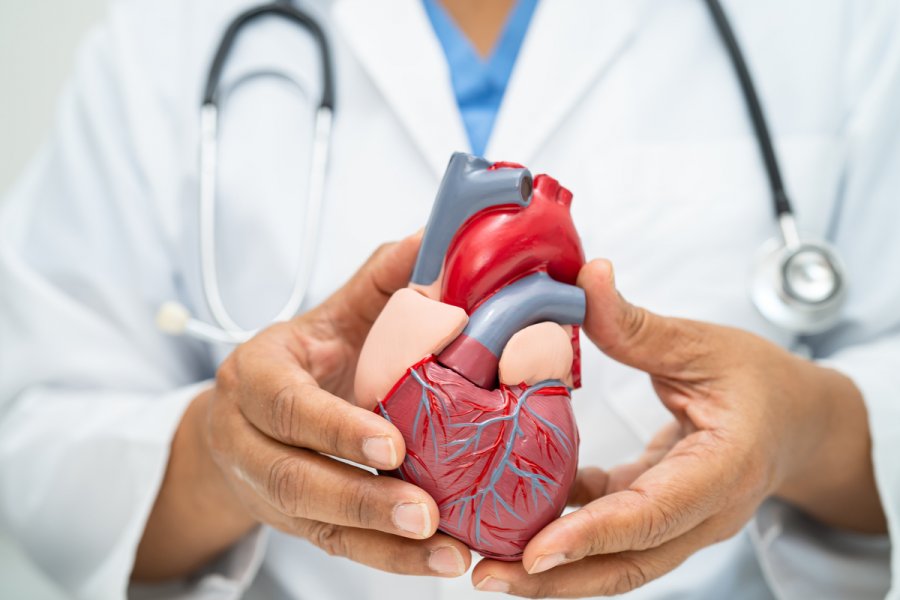Cardiovascular diseases (CVDs) are a group of disorders that affect the heart and blood vessels, including conditions such as heart disease, stroke, hypertension, and heart failure. They are the leading cause of death and disability worldwide, causing millions of deaths each year. In this article, we will explore the impact of cardiovascular diseases on global health, the primary risk factors, and the strategies needed to prevent and manage these conditions.
1. Understanding Cardiovascular Diseases
Cardiovascular diseases encompass a wide range of conditions that affect the heart and blood vessels. Some of the most common types of CVDs include:
- Coronary Artery Disease (CAD): Occurs when the arteries supplying blood to the heart become narrowed or blocked due to plaque buildup, leading to heart attacks or angina.
- Stroke: A condition where the blood supply to the brain is interrupted, leading to brain cell damage. Strokes can be ischemic (caused by blocked arteries) or hemorrhagic (caused by bleeding in the brain).
- Heart Failure: A chronic condition where the heart is unable to pump blood effectively to meet the body’s needs.
- Hypertension (High Blood Pressure): A condition where the force of the blood against the walls of the arteries is consistently too high, increasing the risk of heart disease and stroke.
- Peripheral Artery Disease (PAD): A condition where the blood vessels outside the heart and brain become narrowed, often affecting the legs.
2. The Global Burden of Cardiovascular Diseases
Cardiovascular diseases have a significant impact on global health, contributing to both premature mortality and disability. According to the World Health Organization (WHO), CVDs are responsible for nearly 18 million deaths annually, representing 31% of all global deaths. These diseases not only cause death but also lead to long-term disability, reducing the quality of life for millions of people worldwide.
High Mortality Rates
CVDs are the leading cause of death in both developed and developing countries. Although death rates have declined in high-income countries due to advances in healthcare, the burden of CVDs remains disproportionately high in low- and middle-income countries. This is largely due to limited access to healthcare, rising rates of smoking, unhealthy diets, and lack of physical activity.
Disability and Healthcare Costs
Beyond the loss of life, CVDs cause a significant burden in terms of disability. Many individuals who survive heart attacks or strokes experience long-term complications that reduce their ability to perform daily activities, leading to a decline in productivity. Furthermore, the cost of treating cardiovascular diseases is substantial, putting a strain on healthcare systems, particularly in low-resource settings.
3. Risk Factors for Cardiovascular Diseases
Several factors increase the likelihood of developing cardiovascular diseases. Some of these factors are modifiable, meaning they can be controlled or mitigated through lifestyle changes, while others are non-modifiable, meaning they are beyond an individual’s control.
Modifiable Risk Factors
- Unhealthy Diet: Diets high in saturated fats, trans fats, and sodium contribute to the development of high blood pressure and atherosclerosis (plaque buildup in arteries).
- Physical Inactivity: Lack of exercise is a significant risk factor for obesity, high blood pressure, and diabetes, all of which increase the risk of CVDs.
- Tobacco Use: Smoking damages blood vessels, raises blood pressure, and increases the risk of heart disease and stroke.
- Excessive Alcohol Consumption: Drinking large amounts of alcohol regularly can increase blood pressure, contribute to weight gain, and increase the risk of heart disease.
- Obesity: Being overweight or obese increases the risk of developing CVDs due to its association with high cholesterol, high blood pressure, and type 2 diabetes.
- Diabetes: People with diabetes are at a higher risk of developing CVDs because high blood sugar levels can damage blood vessels and nerves.
Non-Modifiable Risk Factors
- Age: The risk of cardiovascular diseases increases with age, as the blood vessels become less flexible and more prone to damage.
- Gender: Men are generally at a higher risk of developing CVDs at an earlier age than women. However, the risk for women increases after menopause.
- Family History: A family history of heart disease increases the likelihood of developing CVDs, as genetics can play a significant role in heart health.
- Genetic Factors: Certain inherited conditions, such as familial hypercholesterolemia, can increase the risk of early-onset cardiovascular diseases.
4. Preventing Cardiovascular Diseases
Prevention is key to reducing the global burden of cardiovascular diseases. Many risk factors for CVDs are preventable through lifestyle changes, early detection, and effective management of health conditions. Some strategies to prevent cardiovascular diseases include:
Adopting a Heart-Healthy Diet
A nutritious diet rich in fruits, vegetables, whole grains, lean proteins, and healthy fats can help maintain healthy blood pressure, cholesterol levels, and blood sugar.
- Eat plenty of fruits and vegetables: Aim for at least five servings a day to ensure adequate intake of vitamins, minerals, and fiber.
- Choose whole grains: Foods like brown rice, oats, and quinoa are better choices than refined grains.
- Limit saturated and trans fats: Reduce the intake of fatty meats, processed foods, and baked goods made with hydrogenated oils.
- Reduce sodium intake: Aim for less than 2,300 mg of sodium per day (ideally 1,500 mg for those at higher risk).
Regular Physical Activity
Engaging in regular exercise is one of the most effective ways to reduce the risk of cardiovascular diseases. Exercise helps manage weight, lowers blood pressure, and improves cholesterol levels.
- Goal: Aim for at least 150 minutes of moderate-intensity aerobic exercise per week, such as brisk walking or cycling.
Quit Smoking and Limit Alcohol Consumption
Quitting smoking and reducing alcohol intake are vital steps in lowering the risk of cardiovascular diseases. Smoking cessation programs, counseling, and medications can help individuals quit smoking successfully.
Managing Stress
Chronic stress can have a negative impact on heart health, leading to high blood pressure and inflammation. Stress-reducing techniques such as meditation, yoga, and regular relaxation practices can promote cardiovascular health.
Regular Health Screenings
Regular check-ups, including monitoring blood pressure, cholesterol, and blood sugar levels, can help detect potential risks early. Early detection allows for timely intervention to prevent the development of cardiovascular diseases.
5. Treatment and Management of Cardiovascular Diseases
Although prevention is ideal, many individuals will still need treatment for cardiovascular diseases. The management of CVDs often involves a combination of lifestyle modifications, medications, and in some cases, medical procedures.
Medications
Medications such as statins (to lower cholesterol), antihypertensive drugs (to manage high blood pressure), and blood thinners (to prevent blood clots) are commonly prescribed to manage cardiovascular diseases. Diabetes medications may also be prescribed to help control blood sugar levels, which in turn reduce cardiovascular risk.
Surgical Procedures
For severe cases of cardiovascular diseases, surgical interventions may be required. These can include procedures such as:
- Angioplasty and stent placement: Used to open up blocked arteries and improve blood flow.
- Coronary artery bypass grafting (CABG): A surgery used to bypass blocked coronary arteries.
- Heart valve surgery: To repair or replace faulty heart valves.
Conclusion
Cardiovascular diseases remain a leading cause of death and disability worldwide, impacting millions of people each year. The global burden of these diseases is exacerbated by risk factors such as poor diet, lack of physical activity, smoking, and obesity. However, cardiovascular diseases are largely preventable through lifestyle changes such as adopting a healthy diet, increasing physical activity, and managing stress. Early detection, proper management, and access to quality healthcare are essential in reducing the impact of cardiovascular diseases on global health.
FAQs
1. What are the most common symptoms of cardiovascular diseases?
Common symptoms of cardiovascular diseases include chest pain, shortness of breath, fatigue, dizziness, swelling in the legs, and palpitations. If you experience any of these symptoms, it’s important to seek medical attention immediately.
2. Can cardiovascular diseases be reversed?
While cardiovascular diseases cannot be fully reversed, many individuals can manage their condition effectively with lifestyle changes, medications, and medical interventions. Early detection and consistent management can significantly reduce the progression of the disease.
3. How can I reduce my risk of heart disease?
To reduce your risk of heart disease, focus on maintaining a healthy weight, eating a balanced diet, exercising regularly, quitting smoking, managing stress, and monitoring your blood pressure and cholesterol levels regularly.









Leave a Reply